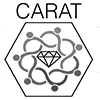Graphene and polyaniline in 2D pave a way to supercapacitors for electromobility
Electromobility could take on new dimensions. Literally. Researchers from the J. Heyrovský Institute of Physical Chemistry of the CAS developed new two-dimensional (2D) materials from graphene and conductive polymer and proved that they are practically usable as supercapacitors.
Supercapacitors are an alternative to various lithium batteries. They are used in cases that require repeated storage and consumption of electricity in smaller quantities per unit weight than lithium batteries but a short and very intensive load is required. A specific example are hybrid buses, whose diesel engine drives electric motors through a generator, which during electrodynamic braking store energy in supercapacitors located on the roof of the vehicle. In the past, such buses were also tested in Prague’s public transport.
The synergy of the combination of carbonaceous materials and a conductive polymer, polyaniline, was first described more than 10 years ago. But only a team led by Martin Kalbáč managed to prepare such materials in 2D form, thus defined and with a thickness corresponding to the sum of the dimensions of one carbon thickness of graphene (a synthetic analogue of graphite) and only a slightly thicker layer of polyaniline.
The purpose of the conductive polymer is not to conduct electricity
Although polyaniline, unlike the vast majority of plastics, has an electrical conductivity comparable to less conductive metals, its role in supercapacitors is not to conduct electricity. In this application, its ability to repeatedly oxidize and reduce, i.e. to change the number of electrons in the polymer chain, is used. Graphene acts as a capacitor in the system described. Polyaniline stores an order of magnitude more energy than the graphene layer: graphene alone showed a specific surface capacity of 2.1 µF cm − 2, 2D material consisting of graphene and polyaniline then 21.2 µF cm − 2. The study was published in ACS Applied Materials & Interfaces.
The novelty of the whole approach lies in the combination of two simple synthetic steps leading to a well-defined material. Functionalization of graphene with sulfone groups as well as preparation of a polyaniline monolayer on surfaces functionalized with sulfone groups are procedures known for a long time from the literature, only no one has thought of joining them together yet. Neither of the processes runs perfectly and their controllability is considerably limited but as two subsequent steps they provide a thin and homogeneous material.
“Our goal was not to take two materials, mix them somehow, and get a mixture that is difficult to study and difficult to describe, on which we will prove that we can reasonably and well describe a very complicated system. It was exactly the opposite. Based on deep knowledge of chemistry and physics of both types of substances, we proposed the simplest possible procedure leading to the goal so that we subsequently face obstacles arising from the nanoscale of samples, but not those arising from not very well defined composition,“ describes the research the first author of the study, chemist Michal Bláha.
“2D structures composed of graphene and polyaniline prepared by us have application potential also in electrocatalysis, as photodetectors or as gas sensors,” concludes Martin Kalbáč from the J. Heyrovský Institute of Physical Chemistry of the CAS.
Link to the article: https://pubs.acs.org/doi/10.1021/acsami.1c05054
Kontakt:
doc. RNDr. Ing. Martin Kalbáč, Ph.D.
Ústav fyzikální chemie J. Heyrovského AV ČR
martin.kalbac jh-inst.cas.cz
jh-inst.cas.cz
+420 266 05 3804
Daniel Jakeš
Ústav fyzikální chemie J. Heyrovského AV ČR
daniel.jakes jh-inst.cas.cz
jh-inst.cas.cz
+420 721 648 855















